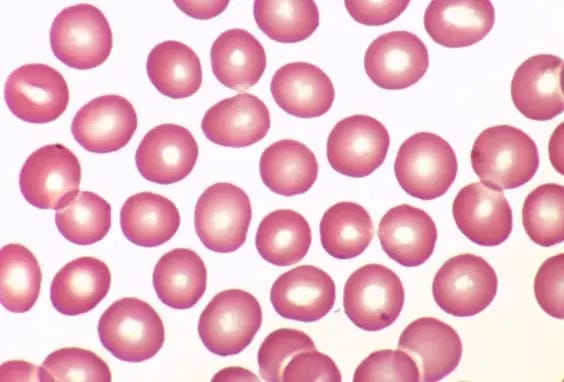Continues from Electric Tissues, Veins and Organs
It is already known that the heart is an electric organ, this is why defibrillators and pacemakers can extend peoples lives. Now lets look at how the electric heart fits in with the rest our our electric cells and organs.
Within an electric cell, as well as the nucleus there are little organelles, like planetary systems around a sun. These organelles do not have their own DNA they use energy out of the cells plasma to give the cell function, such as creating molecules, proteins etc.
Now if we zoom outwards to consider an organ (and this is a staggering leap to make, the ratio would be akin to that of a star and a galaxy cluster) we see a pattern repeating at scale. The organ can create or use special cells that provide function but do not possess their own nucleus or DNA. They also draw their power directly from the organ's plasma. A prime example of this is the blood cell.
In electric biology, the field that connects all the cells in the network provides near instantaneous access to energy to keep an organism switched on. But the ions that are required and produced by every cell are matter, and they move with a much more finite speed.
As an organism grows in scale and especially when it needs to become more mobile, the time delay for ions to be moved around the body becomes a limiting factor. We are well aware what happens to us if our cells are starved of oxygen, or water or are unable to get rid of the waste products they create. The cells malfunction and die.
Now plants and other small organisms manage quite nicely without a heart, but of course plants do not move very quickly and their size is limited by their environment. Animals therefore require a circulatory system to pump that plasma around the body quickly so that a constant supply of the molecules and organelles is available to the organs they pass through. Hyperactive organisms like a Hummingbird take this to the absolute extreme, sometimes exceeding 1200 heart beats per minute.
Therefore the purpose of the blood cell is to form a weak bond with either Oxygen or Carbon Dioxide and carry it through the circulatory system from areas of over abundance to areas of scarcity where the weak bond can be overcome. This is also the reason that oxygenated blood is bright red but blood carrying carbon-dioxide is much darker in colour, the light is shining though carbon.
Other variants of these “organelle cells” attach to other types of molecules and provide a similar transport mechanism throughout the body as well as an important part of our immune system.
An organism lives before it’s heart beats
We are alive and we make our heart beat, we are not alive because our heart beats. This takes a moment to get your head around but it is true. The heart provides an essential function circulating the plasma (which contains our blood cells), and if it stops working we will certainly die of oxygen starvation. But the heart beats because we are alive and while our bodies have sufficiant electric power the heart continues to beat.
As for how it beats, that will be the topic I will be delving into next - electric muscles and tendons and motion.
A timelapse of an organism from cell to adulthood.
We have covered a lot of ground from a singlular electric cell to tissues and organs. Before we zoom out to further dizzying heights, it is worth a look to see if my ideas fit with any observations.
I would like to invite you to view this amazing time-lapse video of the birth of a Salamander from a single cell to adulthood in just 4 minutes.
It is a truly amazing process. Observe at first the same cells reproduce and consume all room then their geometry and size changes and specialization begins. After a while you can see cells or cell clusters moving by charge to where they are needed elsewhere in the organism. After a while the heart forms and starts beating and later the baby Salamander begins moving and swimming before birth.






